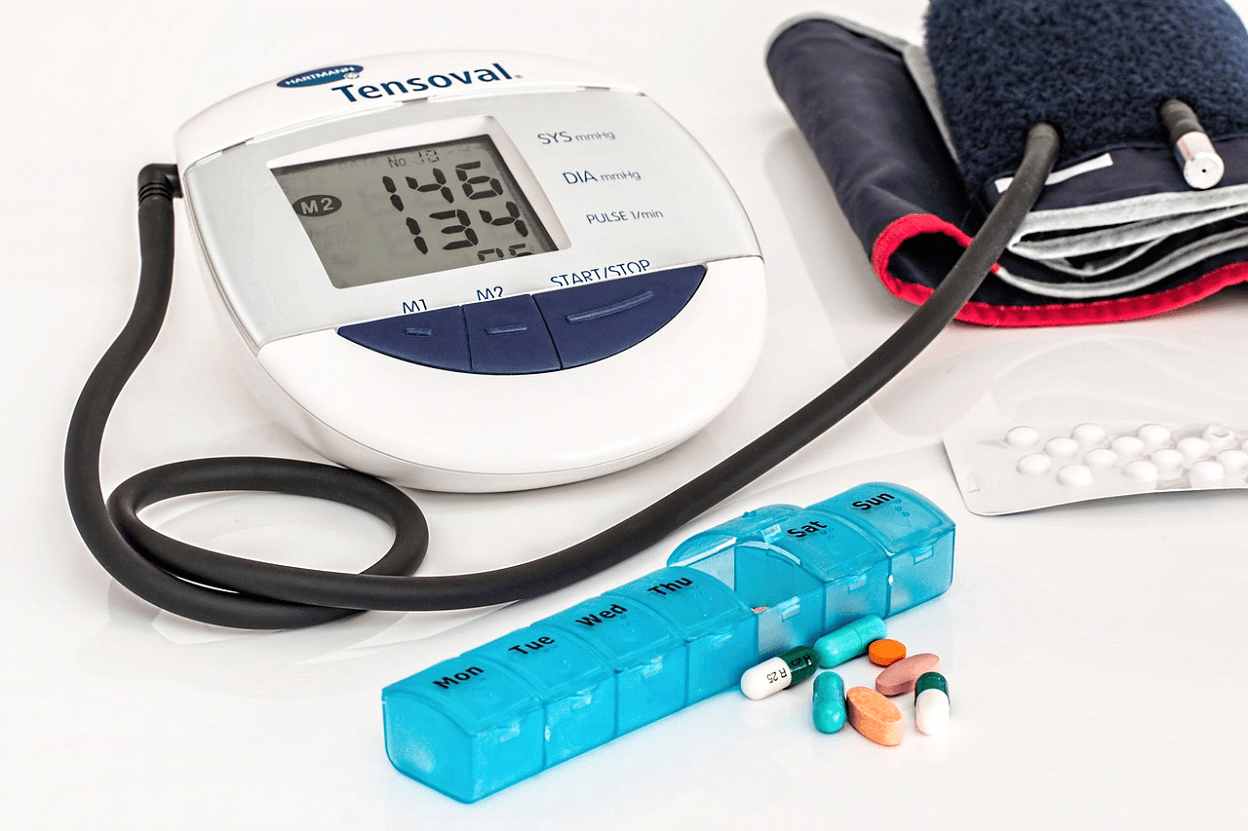Fillable Form T2201
The Disability Tax Credit (DTC) is a non-refundable tax credit in Canada for individuals who have a severe and prolonged impairment in physical or mental function. An impairment qualifies as prolonged if it is expected to or has lasted at least 12 months.
Fill and sign T2201 online and download in PDF.
What is Form T2201?
Form T2201, also known as the "Disability Tax Credit Certificate," is a form used in Canada for individuals applying for the Disability Tax Credit (DTC). The DTC is a non-refundable tax credit that helps persons with disabilities or their supporting persons reduce the amount of income tax they may have to pay.
Having Form T2201 as a clear record of a patient's conditions also helps in managing finances and other things, such as properly citing disabilities that will help to reduce costs for particular services, availing of particular services (such as digital audio transcripts, electronic text copies for particular books, braille texts, and so on), for financial records used in various contexts (such as for settling banks, calculating clearing and settlement efficiencies, and so on). The Federal Reserve System equivalent of Canada, the Bank of Canada, may also ask for proof of disability, which Form T2201 often can be used as, due to it also having other relevant documentation related to the patient's health.
How do I fill out Form T2201?
Get a copy of T2201 template in PDF format.
You may find a fillable copy of Form T2201 here. Alternate formats are not available unless otherwise announced by the Canada Revenue Agency (CRA).
It is highly important that you coordinate with your medical practitioners as well as the depository trust company that you work with. This is important in managing not just the filing of this form but also the other financial information that will be needed in order to file this form and the other forms you will have to file as part of the process of applying for DTC.
Part A - Individual’s Section
PWD’s Information
Enter the following information about the PWD filing this form:
- First Name
- Last Name
- Social Insurance Number
- Mailing Address
- City
- Province or Territory
- Postal Code
- Date of Birth
Person Claiming Disability Amount
Mark the box that indicates whether the PWD is claiming the disability amount, or if someone else is claiming it. If the latter box is marked, enter the following information about the person claiming the disability amount:
- First Name
- Last Name
- Relationship
- Social Insurance Number
- Does the person with a disability live with you?
- Basic Necessities Provided to the PWD (mark the relevant boxes and enter the years for which such necessities were provided)
- Food
- Shelter
- Clothing
- Details of support that has been provided to the PWD
- Signature
Previous Tax Return Adjustments
Mark the box that indicates whether you are the PWD or their legal guardian. If yes, mark the box that indicates whether or not you would like the CRA to apply all disability tax credits to your previous tax returns.
Otherwise, proceed to the next item.
Individual Authorization
Have the PWD or their legal representative sign the form in the space provided, then enter their primary telephone number and the date that the form was signed.
Part B - Medical Practitioner’s Section
Have the medical practitioner fill out this section.
Patient’s Name
Enter the name of the patient in the space provided at the top of each page of this section.
Designation
Enter your initials in the category that applies from the following at the top of each page of this section:
- Medical Doctor
- Nurse Practitioner
- Optometrist
Vision
Mark each of the following boxes that apply for the left and right eye as was assessed in the checkup:
- Visual Acuity
- Measurable on the Snellen Chart
- Enter the acuity value
- Count Fingers
- No Light Perception
- Hand Motion
- Measurable on the Snellen Chart
Then, enter the Field of Vision of the patient (provide the highest diameter).
Blindness in Both Eyes
Mark the box that indicates whether the patient is considered blind in both eyes or not. If yes, enter the year that they became blind. Otherwise, enter the year that limitations on their vision began to surface, and have their primary caretaker enter all additional notes regarding their impairments to vision.
Visual Impairments - Duration
Mark the box that indicates whether or not the visual impairments have lasted or are expected to last for a continuous period of at least 12 months.
Visual Impairments - Improvements
Mark the box that indicates whether or not the patient’s visual impairments have improved or will be expected to improve (to the extent that they would no longer be considered visually impaired). If it is unknown if improvements will happen, mark “unsure”.
Speaking
List any conditions that impair the patient’s ability to speak and/or be understood, then provide the year that each condition was diagnosed.
Medication
Mark the box that indicates whether or not the patient takes medication that aids with their speaking limitations, or if you are unsure if they do or do not.
Devices or Therapy
If the patient uses any devices or goes through speech therapy or other similar programs in order to aid their speaking limitations, enter a description of each of them in the space provided.
Factors Affecting Speech
Provide a description of each of the factors that affect the patient’s ability to speak and be understood, and their severity.
Ability to Speak
Mark the boxes and answer whether or not the noted limitations in speaking apply to all or most of the time that the patient tries to communicate in the table below as applies.
- The patient is unable to speak or takes an inordinate amount of time to speak so as to be understood by a familiar person in a quiet setting.
- The patient has difficulty but does not take an inordinate amount of time to speak so as to be understood by a familiar person in a quiet setting.
Enter the year that the marked speech limitations began.
Speech Impairments - Duration
Mark the box that indicates whether or not the speech impairments have lasted or are expected to last for a continuous period of at least 12 months.
Speech Impairments - Improvements
Mark the box that indicates whether or not the patient’s speech impairments have improved or will be expected to improve (to the extent that they would no longer be considered to have impaired speech). If it is unknown if improvements will happen, mark “unsure”.
Hearing
For the left and right ear respectively, indicate the option in the space provided that best describes the patient’s level of hearing loss in each ear with any applicable devices.
Word Discrimination Score
Enter the patient’s overall word discrimination score in both ears. If this is unknown, mark the box labeled “unknown”.
Devices
Describe any and all devices the patient uses to aid their hearing.
Conditions Causing Hearing Loss
Describe any and all conditions the patient has that cause them to suffer from hearing loss or other hearing impairment.
Ability to Hear
Mark the boxes and answer whether or not the noted limitations in hearing apply to all or most of the time that the patient tries to communicate or listen to others in the table below as applies.
- The patient is unable to hear or takes an inordinate amount of time to hear so as to understand a familiar person in a quiet setting.
- The patient has difficulty but does not take an inordinate amount of time to hear so as to understand a familiar person in a quiet setting.
Enter the year that the marked hearing limitations began.
Hearing Impairments - Duration
Mark the box that indicates whether or not the hearing impairments have lasted or are expected to last for a continuous period of at least 12 months.
Hearing Impairments - Improvements
Mark the box that indicates whether or not the patient’s hearing impairments have improved or will be expected to improve (to the extent that they would no longer be considered to have impaired hearing). If it is unknown if improvements will happen, mark “unsure”.
Walking
List any and all conditions that impact the patient’s ability to walk and provide the year of diagnosis, if available.
Medication
Mark the box that indicates if the patient is taking medication to alleviate their limitations in walking or not. If you are not sure, mark the box labeled “unaware”.
Devices and Therapy
Describe any and all devices and therapy that the patient uses or goes through in order to aid their limitation in walking.
Factors Limiting Ability
Describe each of the factors that limit the patient’s ability to walk, and how severe they are.
Ability to Walk
Mark the box that corresponds to the patient’s limitations in walking, and whether or not it is the case for most of the time the patient tries to walk.
- The patient is unable to walk or takes an inordinate time to walk.
- The patient has difficulty but does not take an inordinate amount of time to walk.
Then enter the year that the above marked limitation in walking began.
Walking Impairments - Duration
Mark the box that indicates whether or not the walking impairments have lasted or are expected to last for a continuous period of at least 12 months.
Walking Impairments - Improvements
Mark the box that indicates whether or not the patient’s walking impairments have improved or will be expected to improve (to the extent that they would no longer be considered to have an impaired ability to walk). If it is unknown if improvements will happen, mark “unsure”.
Eliminating
List and describe any conditions that affect the patient’s ability to personally manage or control their bowel or bladder functions, and provide the year of diagnosis if available.
Medication
Mark the box that indicates whether or not the patient takes medication to aid in managing their bowel and bladder functions. If you are unsure, mark the box labeled “unsure”.
Devices and Therapy
Describe all devices and therapy the patient uses or goes through in order to aid in controlling their bowel or bladder functions.
Factors Affecting Elimination
Describe all of the factors that affect the patient’s ability to control their bowel or bladder functions, and how severe they are.
Limitations in Eliminating
Mark the box below that corresponds to the limitations that the patient has in eliminating, and whether or not it is the case for every time the patient eliminates waste.
- The patient is unable or takes an inordinate time to personally manage bowel or bladder functions.
- The patient has difficulty but does not take an inordinate time to personally manage their bowel or bladder functions.
Enter the year that the above marked limitations began.
Elimination Impairments - Duration
Mark the box that indicates whether or not the impairments to bowel or bladder function control have lasted or are expected to last for a continuous period of at least 12 months.
Elimination Impairments - Improvements
Mark the box that indicates whether or not the patient’s impairments to bowel or bladder function control have improved or will be expected to improve (to the extent that they would no longer be considered to have an impaired bowel or bladder functions). If it is unknown if improvements will happen, mark “unsure”.
Feeding
List and describe any conditions that affect the patient’s ability to eat, and provide the year of diagnosis if available.
Medication
Mark the box that indicates whether or not the patient takes medication to aid their inability to eat properly. If you are unsure, mark the box labeled “unsure”.
Devices and Therapy
Describe all devices and therapy the patient uses or goes through in order to alleviate their difficulties with eating.
Factors Affecting Elimination
Describe all of the factors that affect the patient’s ability to eat, and how severe they are.
Limitations in Eliminating
Mark the box below that corresponds to the limitations that the patient has in eating, and whether or not it is the case for every time the patient attempts to eat on their own.
- The patient is unable or takes an inordinate time to feed themselves.
- The patient has difficulty but does not take an inordinate time to feed themselves.
Enter the year that the above marked limitations began.
Eating Impairments - Duration
Mark the box that indicates whether or not the patient’s eating impairments have lasted or are expected to last for a continuous period of at least 12 months.
Elimination Impairments - Improvements
Mark the box that indicates whether or not the patient’s impairments to eating have improved or will be expected to improve (to the extent that they would no longer be considered to have an impaired ability to feed themselves). If it is unknown if improvements will happen, mark “unsure”.
Dressing
List and describe any conditions that affect the patient’s ability to dress themselves, and provide the year of diagnosis if available.
Medication
Mark the box that indicates whether or not the patient takes medication to aid in dressing themselves. If you are unsure, mark the box labeled “unsure”.
Devices and Therapy
Describe all devices and therapy the patient uses or goes through in order to aid in their ability to dress themselves.
Factors Affecting Dressing
Describe all of the factors that affect the patient’s ability to dress themselves, and how severe they are.
Limitations in Dressing
Mark the box below that corresponds to the limitations that the patient has in dressing themselves, and whether or not it is the case for every time the patient tries to dress themselves.
- The patient is unable or takes an inordinate time to dress themselves.
- The patient has difficulty but does not take an inordinate time to dress themselves.
Enter the year that the above marked limitations began.
Dressing Impairments - Duration
Mark the box that indicates whether or not the dressing impairments have lasted or are expected to last for a continuous period of at least 12 months.
Dressing Impairments - Improvements
Mark the box that indicates whether or not the patient’s dressing impairments have improved or will be expected to improve (to the extent that they would no longer be considered to have an impaired ability to dress themselves). If it is unknown if improvements will happen, mark “unsure”.
Mental Functions Necessary for Everyday Life
List and describe any conditions that affect the patient’s ability to perform and manage their mental functions that are necessary for everyday life, and provide the year of diagnosis if available.
Medication
Mark the box that indicates whether or not the patient takes medication to aid in managing their mental health. If you are unsure, mark the box labeled “unsure”.
If they do, mark the boxes that indicate whether or not the patient requires reminders from other people in order to take their medication, and how effective the medication is or seems to be in treating their condition.
Devices and Therapy
Describe all devices and therapy the patient uses or goes through in order to aid in managing their mental health.
Factors Affecting Elimination
Describe all of the factors that affect the patient’s mental health, and how severe they are.
Capacity to Live Alone
Mark the box that indicates whether or not the patient has an impaired capacity to live independently and on their own without daily supervision or support from others. If yes, select all types of support received by the patient from the following:
- Adult
- Assisted living or long-term facility
- Community-based health services
- Hospitalization
- Support from family members
- Child under 18
- Adult supervision at home beyond and age-appropriate level
- Additional support from educational staff at school
Then provide additional details about any support received.
Extent of Limitations
For the items below, mark the box that indicates the extent to which the patient’s limitations affect the given activity as compared to someone of a similar age without any impairment in mental functions (no limitation, some limitations, or very limited capacity).
- Adaptive Functioning
- Adapt to change
- Express basic needs
- Go out into the community
- Initiate common, simple transactions
- Perform basic hygiene or self-care activities
- Perform necessary everyday tasks
- Other (specify in the space provided)
- Attention
- Demonstrate awareness of danger and risks to personal safety
- Demonstrate basic impulse control
- Other (specify in the space provided)
- Concentration
- Focus on a simple task for any length of time
- Absorb and retrieve information in the short-term
- Other (specify in the space provided)
- Goal-setting
- Make and carry out simple day-to-day plans
- Self-direct to begin everyday tasks
- Other (specify in the space provided)
- Judgment
- Choose weather-appropriate clothing
- Make decisions about their own treatment and welfare
- Recognize risk of being taken advantage of by others
- Understand consequences of their actions or decisions
- Other (specify in the space provided)
- Memory
- Remember basic personal information such as date of birth and address
- Remember material of importance and interest to themselves
- Remember simple instructions
- Other (specify in the space provided)
- Perception of reality
- Demonstrate an accurate understanding of reality
- Distinguish reality from delusions and hallucinations
- Other (specify in the space provided)
- Problem-solving
- Identify everyday problems
- Implement solutions to simple problems
- Other (specify in the space provided)
- Regulation of Behavior and Emotions
- Behave appropriately for the situation
- Demonstrate appropriate emotional responses for the situation
- Regulate mood to prevent risk of harm to self or others
- Other (specify in the space provided)
- Verbal and non-verbal comprehension
- Understand and respond to non-verbal information or cues
- Understand and respond to verbal information
- Other (specify in the space provided)
Limitations to Mental Functions
Mark the box below that corresponds to the limitations that the patient has with regards to their management of their mental functions for everyday life, and whether or not these limitations apply all the time.
- The patient is unable to perform these functions by themselves, or takes an inordinate time to do so.
- The patient has difficulty performing these functions, but does not take an inordinate amount of time.
Then enter the year that the above marked limitation began.
Mental Impairments - Duration
Mark the box that indicates whether or not the patient’s mental impairments have lasted or are expected to last for a continuous period of at least 12 months.
Mental Impairments - Improvements
Mark the box that indicates whether or not the patient’s mental impairments have improved or will be expected to improve (to the extent that they would no longer be considered to have an impaired ability to manage and perform the mental functions needed for everyday life). If it is unknown if improvements will happen, mark “unsure”.
Cumulative Effect of Significant Limitations
Mark the box next to each of the categories that you completed an above section for from the following:
- Vision
- Speaking
- Hearing
- Walking
- Eliminating
- Feeding
- Dressing
- Mental functions necessary for everyday life
Limitations - Prevalence in Daily Life
Mark the box that indicates whether or not the patient’s limitations in at least two of the above categories selected above exist together all or substantially all the time.
Limitations - Disability
Mark the box that indicates whether or not the patient’s limitations cumulatively affect a particular category of impairment such that they are unable to or take an inordinate amount of time to perform functions related to that category.
Limitations - Beginning Year
Enter the year that the cumulative effect of the limitations described above began.
Life-sustaining Therapy
Specify the type of life-sustaining therapy that the patient is receiving, and for what medical condition(s).
Eligible Activities
List the eligible activities for which the patient or other person dedicates their time to administer the life-sustaining therapy.
Life-sustaining Therapy - Vital Function
Mark the box that indicates whether or not the patient’s therapy is necessary in order to support a vital function.
Life-sustaining Therapy - Frequency of Treatment
Enter the minimum number of times per week that the patient must receive the life-sustaining therapy.
Life-sustaining Therapy - Hours per Week
Enter the average number of hours per week that the patient or another person needs in order to administer the life-sustaining therapy.
Year Eligibility Criteria Was Met
Enter the year that the patient met the eligibility criteria for life-sustaining therapy. If this is unavailable or unknown, enter the year that the patient began undergoing life-sustaining therapy.
Life-sustaining Therapy - Duration
Mark the box that indicates whether or not the life-sustaining therapy has lasted or is expected to last for a continuous period of at least 12 months.
Life-sustaining Therapy - Improvement
Mark the box that indicates whether or not the impairment that requires life-sustaining therapy to address has or is expected to improve, to such an extent that therapy will no longer be needed. If you are unsure if improvement will occur with the patient’s condition, mark the box labeled “unsure”.
Certification
Years
Enter the years for which the patient has been under your care (enter the year that they began to go to you for treatment, and until what year. If they are still under your care, enter the present year.)
Medical Information
Mark the box that applies to whether or not you have medical information on file for all the year(s) that you certified on this form.
Medical Practitioner Type
Mark only one of the boxes below that applies to what type of medical practitioner you are.
- Medical Doctor
- Nurse Practitioner
- Optometrist
- Occupational Therapist
- Audiologist
- Physiotherapist
- Psychologist
- Speech-language Pathologist
Signature
Sign the form in the space provided.
Practitioner Information
Enter the following information:
- Name
- Medical License or Registration Number
- Telephone Number
- Date
- Address
Start filling out a T2201 sample and export in PDF.
Frequently Asked Questions (FAQs)
Can someone other than the individual with a disability fill out Form T2201?
Yes, a legal representative can fill out Form T2201 on behalf of the individual with a disability.
Are there age restrictions for applying for the Disability Tax Credit?
No, there are no age restrictions for applying for the Disability Tax Credit. However, for minors, a legal guardian will generally need to be the one to file for DTC instead.
How long does it take to process Form T2201?
Processing times for Form T2201 may vary, but it may take anywhere between several weeks to months.
Can Form T2201 be submitted online?
No, Form T2201 cannot be submitted online. It must be printed, filled out, and mailed or delivered to the Canada Revenue Agency (CRA).
Is there a fee to submit Form T2201?
No, there is no fee to submit Form T2201. However, other forms that this one may be submitted alongside may have their own fees or additional requirements.
Can Form T2201 be amended after submission?
Yes, Form T2201 can be amended if there are changes or updates to the individual's condition.
Can Form T2201 be used to apply for other benefits?
No, Form T2201 is specifically for applying for the Disability Tax Credit and cannot be used for other benefits.
Can Form T2201 be used for retroactive claims?
Yes, Form T2201 can be used for retroactive claims, allowing individuals to claim the Disability Tax Credit for previous years.
What is the definition of a "qualified practitioner" for certifying and filling out Form T2201?
A qualified practitioner is a medical doctor, optometrist, audiologist, occupational therapist, physiotherapist, psychologist, or other licensed healthcare professional.
Can Form T2201 be appealed if it is denied?
Yes, individuals can appeal a denial of Form T2201 by contacting the CRA.
Create a T2201 document, e-sign, and download as PDF.
Keywords: t2201 fillable t2201 t2201 disability tax credit certificate t2201 form t2201 canada income tax form t2201 form t2201 disability tax credit form.




















